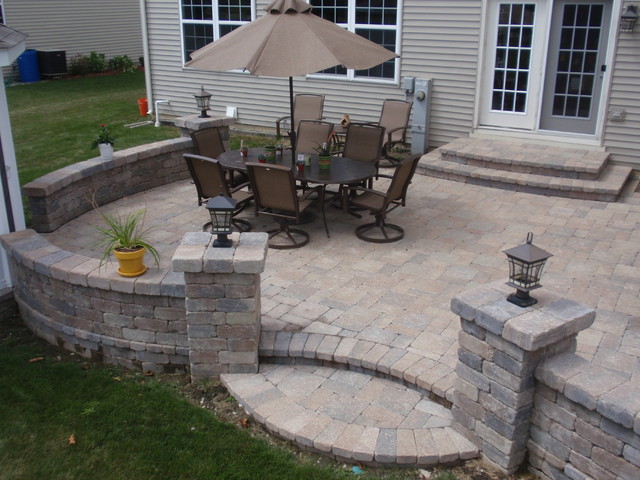Hardscape 101: Design Guides
If you're creating a brand-new outdoor area (or overhauling the hardscape you already have), we'll assist direct you, from starting to end.
Start by dreaming big-- you can control your wildest concepts later on, if need be. Make a list (even if it's a mile long) of everything you want in your landscape: deck, patio area, swimming pool, outdoor kitchen, edible garden, outdoor shower. Then use our Style Guides to assist you separate the musts from the maybes.
Pore over our Hardscape 101 style guides to see countless images of garden spaces to discover what you like, with an eye to style, colors, materials, and furniture. You'll see particular styles emerge-- and then you'll be all set to set a budget.
Where to spend lavishly and where to conserve? Some things worth spending on: a master strategy, masonry to offer your garden great bones, quality products to withstand the components, privacy, and workmanship. Ways to save: usage gravel rather of pavers on courses, reuse existing materials (bricks, stone, pickets), purchaser smaller plants, and use mix-and-match furniture.
Small details can have big effect in a landscape. Make sure hardscape products-- stone, pavers, concrete, gravel, wood, paint, hardware-- all interact, and likewise match your house's architectural design.
In our Hardscape 101 design guides, it's our mission to demystify garden design. And keep in mind: it does not matter if you're a first timer or a master gardener: you can do this.
Hardscaping 101: Decks & Patios
Think about a deck or patio area as an instantaneous extra room. Absolutely nothing will broaden your home faster.
The distinction in between a deck and a patio area? A patio is developed at ground level, on a flat surface, and generally is built of a "irreversible" material such as stone pavers, brick, or put https://gikascontracting.com/montclair-hardscaping/ concrete. A deck drifts in the air, supported by footings, at a height of anywhere from a couple of inches to numerous feet and can be constructed on an existing slope.
Deck frames normally are constructed of wood or steel supports. Deck floor covering choices include natural wood, composite products, bamboo, and pressure-treated lumber. For an overview on choices (and their expenses) see Everything You Required to Learn About Decking Products.
For more pros and cons, read our Hardscaping 101 guides on bluestone, brick, wood deck tiles, stone deck tiles, decomposed granite, and concrete (pre-cast and poured-in-place) to figure out which decking material or pavers to use for your deck or outdoor patio.
Hardscaping 101: Driveways
Driveways typically get taken for given. They should have much better. When it comes to creating curb appeal, the entry road that connects a home to the public thoroughfare is typically a home's most popular hardscape feature.
" An appealing driveway will increase resale worth if a house owner ever wants to sell-- and in the meantime will invite you home every day," writes our factor Kier Holmes.
Are you developing a brand-new driveway? Step one: Design and function must wed. To lay out a driveway, start by studying the shape and shape of the land. How huge is your property? Exist dips and slopes to browse between the general public roadway and your house? Take into consideration the number of parked cars you will desire a driveway to accommodate and whether you will need to designate square footage for a garage.

Your driveway's style will depend upon its size, shape, and the product you utilize to pave it. If you reside on a busy street, think about a horseshoe driveway to make it easier to pull out into traffic. If your http://query.nytimes.com/search/sitesearch/?action=click&contentCollection®ion=TopBar&WT.nav=searchWidget&module=SearchSubmit&pgtype=Homepage#/Montclair Hardscaping house is held up from the road, consider a curving driveway to create a country-lane impact. On a smaller sized lot, a simple, straight driveway sited on the edge of the residential or commercial property might be the very best choice.
The material you select to appear a driveway must complement the architectural design of the house. Pavers, gravel, grass block pavers, asphalt, and poured-in-place concrete are all common choices. Which is the very best option for your climate and surface? Read on: